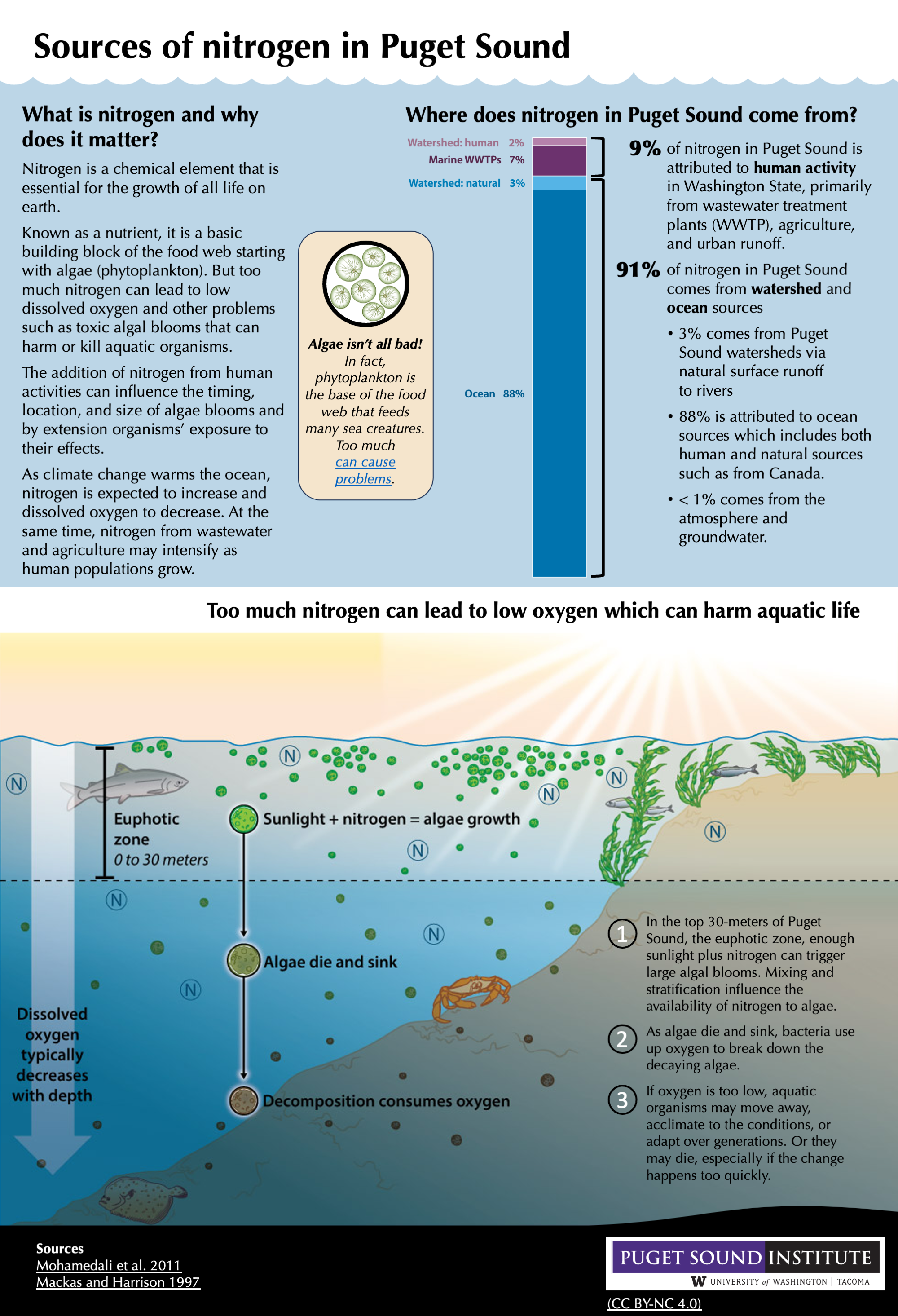Sources of nitrogen in Puget Sound (infographic)
Nitrogen is a chemical element that is essential for the growth of all life on earth. But too much nitrogen can lead to low dissolved oxygen and other problems such as toxic algal blooms that can harm or kill aquatic organisms.

Download the infographic (pdf)
Alternative text for web accessibility
What is nitrogen and why does it matter?
Nitrogen is a chemical element that is essential for the growth of all life on earth.
Known as a nutrient, it is a basic building block of the food web starting with algae (phytoplankton). But too much nitrogen can lead to low dissolved oxygen and other problems such as toxic algal blooms that can harm or kill aquatic organisms.
The addition of nitrogen from human activities can influence the timing, location, and size of algae blooms and by extension organisms’ exposure to their effects.
As climate change warms the ocean, nitrogen is expected to increase and dissolved oxygen to decrease. At the same time, nitrogen from wastewater and agriculture may intensify as human populations grow.
Where does nitrogen in Puget Sound come from?
- 9% of nitrogen in Puget Sound is attributed to human activity in Washington State, primarily from wastewater treatment plants (WWTP), agriculture, and urban runoff.
- 91% of nitrogen in Puget Sound comes from watershed and ocean sources
- 3% comes from Puget Sound watersheds via natural surface runoff to rivers.
- 88% is attributed to ocean sources which includes both human and natural sources such as from Canada.
- < 1% comes from the atmosphere and groundwater.
Algae (e.g., phytoplankton) isn’t all bad! In fact, it’s the base of the food web that feeds many sea creatures. But an excess can cause problems.
Too much nitrogen can lead to low oxygen which can harm aquatic life
In the top 30-meters of Puget Sound, the euphotic zone, enough sunlight plus nitrogen can trigger large algal blooms. Mixing and stratification influence the availability of nitrogen to algae.
As algae die and sink, bacteria use up oxygen to break down the decaying algae.
If oxygen is too low, aquatic organisms may move away, acclimate to the conditions, or adapt over generations. Or they may die, especially if the change happens too quickly.
Data sources: Mohamedali et al. 2011; Mackas and Harrison 1997

